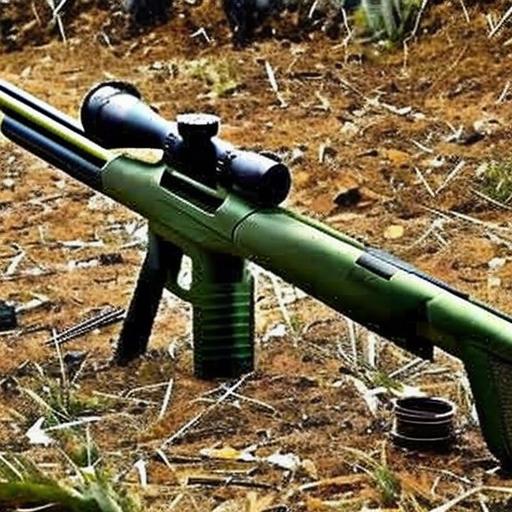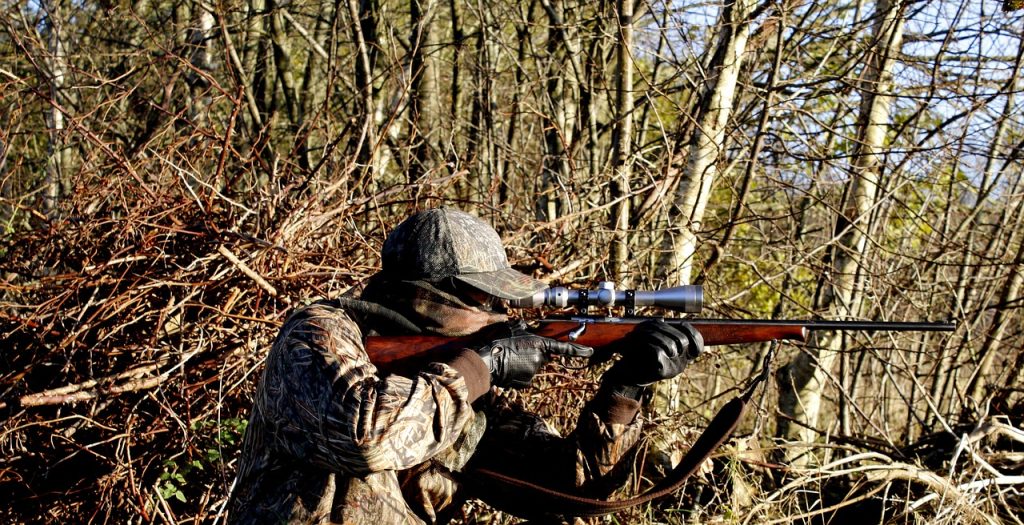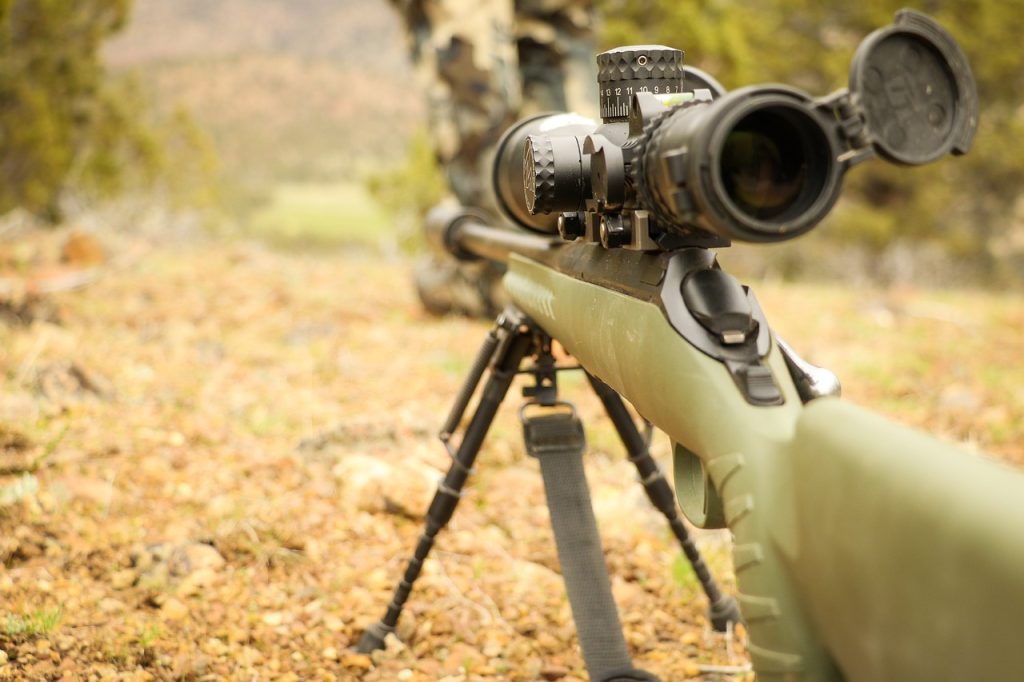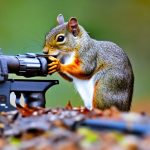Your cart is currently empty!

Battle of the Calibers: Top 5 Contenders for Best Caliber for Long Range Varmint Hunting

Table of Contents
Introduction
Ah, the exhilarating realm of long range varmint hunting. If you’ve ever crouched in the early dawn, eyes trained on the distant horizon, waiting for that perfect shot, you’ll know there’s nothing quite like it. It’s a test of patience, skill, and, most importantly, equipment. And that brings us to the heart of our conversation today: the best caliber for long range varmint hunting. Over the years, I’ve trudged through upland terrains, shotgun slung over my shoulder, and swapped countless tales at hunting lodges. One debate that never seems to end? Yep, you guessed it – which caliber takes the crown for those long-range shots. As someone with a penchant for small game, I’ve had my fair share of experiences with different calibers. And today, I’m here to share a bit of that knowledge, helping both rookies and seasoned hunters alike navigate this crucial choice.
Understanding the Art of Varmint Hunting
A Storied Past: The Legacy of Varmint Hunting
Varmint hunting has roots that reach deep into our past. For many of our ancestors, keeping varmints at bay wasn’t just a sport – it was a matter of survival. These critters, often small and cunning, posed a threat to crops, livestock, and even property. Hunters back in the day took on the responsibility of keeping their communities safe, making varmint hunting an essential skill. Today, while the survival aspect may have diminished, the sport has evolved into a test of precision, strategy, and patience. For many of us, it’s not just a hobby; it’s a connection to a bygone era and a testament to our respect for the great outdoors.
The Crucial Caliber Question
The debate around the best caliber for long range varmint hunting isn’t just for bragging rights. It’s about ensuring we make clean, humane shots every time. Think of it this way: in varmint hunting, your caliber is like the brush to a painter. It defines the strokes, sets the tone, and ultimately determines the outcome. Choose poorly, and you risk wounding, not killing, which is neither ethical nor fair to the animal. A well-placed shot with the right caliber ensures a swift end, minimizing any potential suffering.
Striking the Perfect Balance: Range, Accuracy, and Power
But how do we find that ideal caliber? It’s all about balance.
Range is crucial. Varmints are elusive, often spotted at distances that make even experienced hunters gulp. Your caliber choice needs to have the capability to reach out to those far-off critters without compromising on efficiency.

Next, we talk accuracy. It doesn’t matter if your bullet can travel a mile if it can’t hit its mark. A caliber’s accuracy ensures that your shots go where you intend them to. Remember, it’s not about spraying bullets; it’s about that one perfect shot.
Lastly, power. Now, varmints aren’t big game. They’re small, often delicate creatures. But that doesn’t mean you can skimp on firepower. The bullet needs to carry enough energy to ensure a quick, humane kill, but not so much that it causes unnecessary damage.
When you find a caliber that harmoniously combines these three elements, you’ll know you’ve hit the jackpot. And trust me, there’s no better feeling in the world for a small game hunter.
.223 Remington – The Popular Choice
Origins and Overview of the .223 Remington
For many, the tale of the .223 Remington begins in the early 1960s, though its heritage is a little older than that. Initially birthed as a result of military demands, this cartridge quickly found its way into the civilian market, and not long after, into the hearts of varmint hunters everywhere. The .223 Remington offers a mix of precision and adaptability that’s hard to match. Its lightweight bullet and high velocity make it a prime candidate for reaching out and touching those pesky critters from a distance.
Why It’s a Varmint Hunter’s Dream
Now, as someone who’s spent the better part of my life chasing after small game, I’ve got a soft spot for the .223 Remington, and I’m not alone. There’s a reason this caliber often tops the list for the best caliber for long range varmint hunting. For starters, it’s versatile. Whether you’re aiming for a prairie dog in the open plains or a coyote lurking around your property, the .223 has got you covered. The recoil? Barely noticeable, making it a great choice for both rookies looking to get their feet wet and seasoned hunters seeking consistent shot placements.
Moreover, the ammunition is widely available and often more affordable than its counterparts. This means more practice rounds at the range without burning a hole in your pocket. And let’s face it, in the world of hunting, practice does make perfect.
Limitations of the Beloved .223
However, before we crown the .223 Remington as the unrivaled king of varmint hunting, there are some considerations to bear in mind. First, while it’s fantastic for smaller varmints, when you’re dealing with larger critters, especially at the farther end of ‘long-range’, the .223 might start to show its limitations. It may not always deliver the knockdown power required for larger pests.
Additionally, while its popularity means wide availability, it also means there are myriad ammo options to sift through. This can be a tad overwhelming for newcomers, and not every type of .223 ammo is ideal for every varmint situation. Choosing the wrong bullet type or weight might mean less-than-stellar results in the field.
In the grand scheme of things, though, these limitations are mere footnotes in the storied legacy of the .223 Remington. It remains a top contender and a favorite for many – a testament to its enduring appeal in the world of long range varmint hunting.
.22-250 Remington – Speed and Precision
Meet the .22-250 Remington: A Blend of Art and Engineering
The .22-250 Remington might sound like just another number in the world of hunting calibers, but ask any seasoned small game hunter and you’ll see their eyes light up at its mention. This caliber, known for its blistering speed and uncanny precision, has made a mark in the hunting world, and for good reason. Boasting a flat trajectory and a reputation for leaving little to no room for error, the .22-250 is like the sleek sports car of the varmint hunting world – it’s both stylish in performance and impactful upon delivery.
.22-250 vs. .223 Remington: A Friendly Rivalry
Now, how does our speedster fare when put side by side with the popular .223 Remington? Well, that’s where the plot thickens. While both calibers have their legion of fans, they serve slightly different niches. The .223 Remington, as previously mentioned, is the versatile workhorse – reliable, widely available, and forgiving. The .22-250, on the other hand, is like a sharpshooter’s dream. It typically packs more powder, which translates to higher velocities. This means that over long distances, especially in less than ideal conditions, the .22-250 can offer a flatter trajectory, giving it an edge in precision.

However, with greater power comes, well, greater responsibility. The .22-250 can be a tad more punishing on your rifle barrel due to its high velocity, and it might not be as readily available (or as affordable) as the .223. But for those who prioritize precision over all else, these are but minor inconveniences.
When the .22-250 Truly Takes the Stage
So, where does the .22-250 Remington truly outshine its peers? Think open plains, long sightlines, and challenging distances. If you’re targeting varmints like prairie dogs, which often require shots from a great distance, the .22-250’s flat trajectory ensures that the bullet gets to the target in the least time possible, minimizing the impact of external factors like wind. Moreover, for those elusive critters that have, over time, become wary of human presence and hence keep a generous distance, the .22-250 offers the confidence of a clean, humane shot.
In essence, while the .22-250 Remington might not be the universal answer to the “best caliber for long range varmint hunting” debate, for those situations that demand unparalleled speed and precision, it surely is a top contender.
Other Noteworthy Contenders
In the intricate dance of long-range varmint hunting, while calibers like .223 Remington and .22-250 often steal the limelight, they aren’t the only players on the field. Let’s turn our gaze to some other noteworthy contenders that have been making waves, each bringing their unique flair to the hunting scene.
6mm Creedmoor: The Rising Star
First up, the 6mm Creedmoor. A relatively new kid on the block, it has quickly climbed the ranks due to its balance of speed and accuracy. Born from the increasingly popular Creedmoor family, the 6mm variant is lauded for its versatility. Whether you’re targeting a pesky groundhog or a coyote on the run, this caliber offers a smooth performance. Its adaptability to different bullet weights makes it a favorite among reloaders, too, giving them ample room to experiment.
.204 Ruger: Speedster with a Gentle Touch
Enter the .204 Ruger – a caliber that’s made a name for itself by offering high velocity without the punishing recoil. For those who spend long hours in the field, taking shot after shot, this can be a real blessing. Its low recoil ensures minimal fatigue, allowing for consistent accuracy throughout the hunting session. Additionally, the flat trajectory of its bullets, thanks to that impressive velocity, makes it a strong contender for varmint hunting, especially when quick, precise shots are the order of the day.
.243 Winchester: The Dual Threat
Last, but by no means least, is the .243 Winchester. What makes this caliber particularly interesting is its duality. Not only is it precise and potent enough for varmints, but it’s also robust enough to take down bigger game, like deer. For hunters seeking a versatile caliber that bridges the gap between small game and bigger challenges, the .243 Winchester stands out as a multifaceted tool.
Weighing the Contenders: Pros and Cons in the Field
Now, to the big question: how do these calibers stack up in the wild?
- The 6mm Creedmoor, with its versatility, is excellent for those unpredictable days in the field when targets vary in size and distance. However, its relative novelty means ammunition might not always be as readily available as some of the more established calibers.
- The .204 Ruger’s main strength, its minimal recoil, can also be its Achilles’ heel when it comes to energy transfer on larger varmints. Its bullets might sometimes lack the punch needed for a quick kill on bigger game.
- As for the .243 Winchester, while its versatility is commendable, it might be overkill for smaller varmints, potentially causing more damage than desired.
In the realm of long-range varmint hunting, the best caliber often boils down to personal preference and specific hunting scenarios. These contenders, with their distinct strengths, surely make the choice both challenging and exciting.
Related Questions
Is there a one-size-fits-all caliber for varmint hunting?
Well, the short answer is: not really. The world of varmint hunting is diverse, with critters ranging from tiny prairie dogs to heftier coyotes. While there are versatile calibers, like the .223 Remington, which do a commendable job across various scenarios, no single caliber can truly claim to be the jack-of-all-trades. It’s a bit like shoes; while there are multi-purpose ones, you wouldn’t wear the same pair for hiking and formal events, right?
How does bullet choice impact the effectiveness of a caliber in varmint hunting?
Bullet choice is a bit like the seasoning in a dish – it can make or break your hunting experience. Two hunters can use the same caliber but achieve different results based on their bullet choice. Factors like bullet weight, design, and ballistic coefficients can greatly influence performance. For instance, a lighter, faster bullet might be ideal for smaller varmints, ensuring minimal pelt damage. On the flip side, for larger pests, a heavier bullet offering better energy transfer could be more effective. It’s all about matching the bullet to the task.
How much does personal shooting style influence caliber choice?
Personal shooting style plays a bigger role than many realize. Some hunters prefer taking their time, calculating their shots – they might lean towards calibers that offer pinpoint precision at longer ranges. Others, especially those who encounter skittish or fast-moving varmints, might prefer something with a quicker follow-up shot capability. Recoil sensitivity, shooting posture, and even how often one practices can also factor into the decision. At the end of the day, the best caliber is often the one that feels right in your hands and aligns with your style.
Summary
It’s been quite the journey dissecting some of the top contenders in the quest for the best caliber for long range varmint hunting. Whether you’re a fan of the ever-reliable .223 Remington, or you’re leaning towards the speedy .22-250 Remington, it’s essential to remember that hunting is a personal experience. Different calibers resonate with different hunters, often because of the unique quirks, challenges, and joys they bring to the table. My time chasing upland game has taught me that while equipment matters, it’s the hunter’s skill, patience, and passion that truly make the difference. So, by all means, experiment with these calibers, find your perfect match, but always remember the ethics and responsibilities we bear. After all, the caliber is just a tool; it’s the hand that wields it and the heart behind that hand that counts. Happy hunting, folks!

Herb has been a longtime lover of the outdoors. Whether it be hunting, camping, fishing or just getting outside to reset. Proud father and animal lover. Bourbon anyone?

by
Tags:
Comments
2 responses to “Battle of the Calibers: Top 5 Contenders for Best Caliber for Long Range Varmint Hunting”
-
[…] starting out, choosing the right caliber is crucial for a successful hunt. Check out the article here to learn […]
-
[…] If you’re interested in elk hunting with a 7mm-08 rifle, you might also want to check out this article on “The Best Caliber for Long Range Varmint Hunting.” It provides valuable insights into choosing the right caliber for hunting varmints at long distances. Whether you’re targeting groundhogs, rabbits, or other small game, this article will help you make an informed decision. Read more […]

Categories
- Big Game Hunting (301)
- Deer (202)
- Reviews (3)
- Shooting (16)
- Slingshot (1)
- Small Game Hunting (42)
- Upland Hunting (126)
- Waterfowl Hunting (3)





Leave a Reply